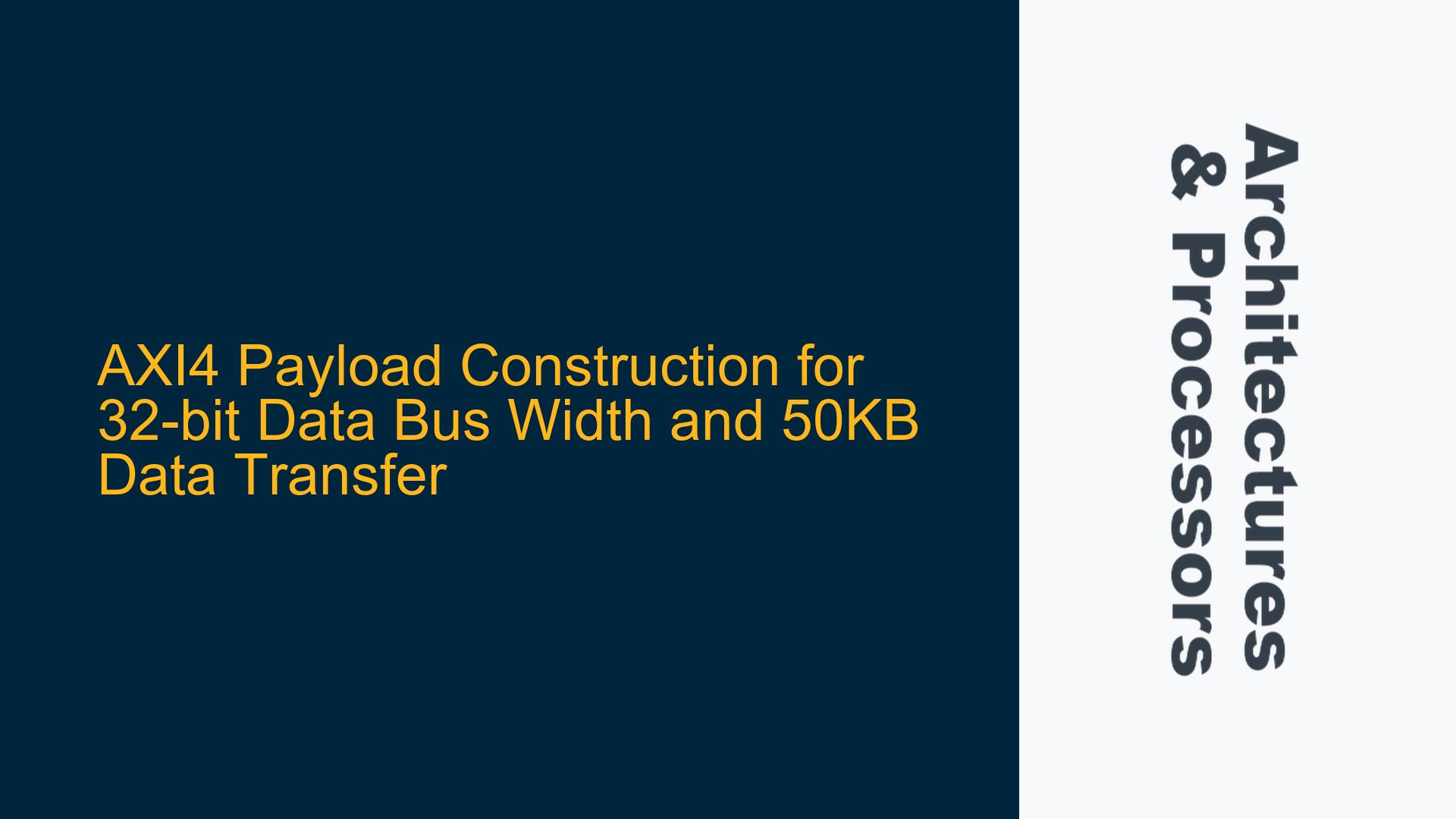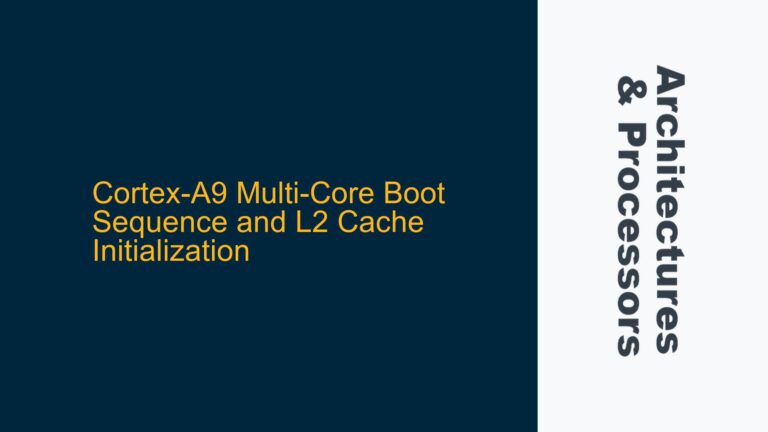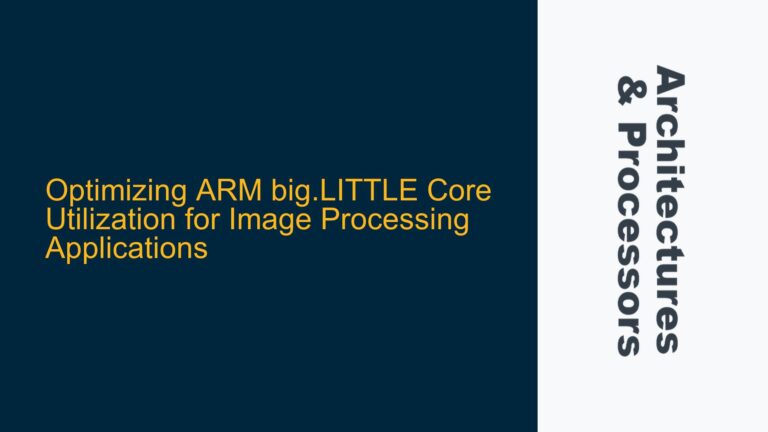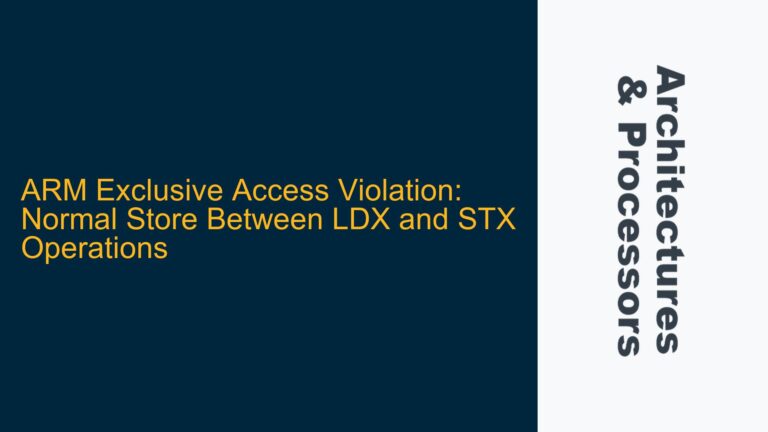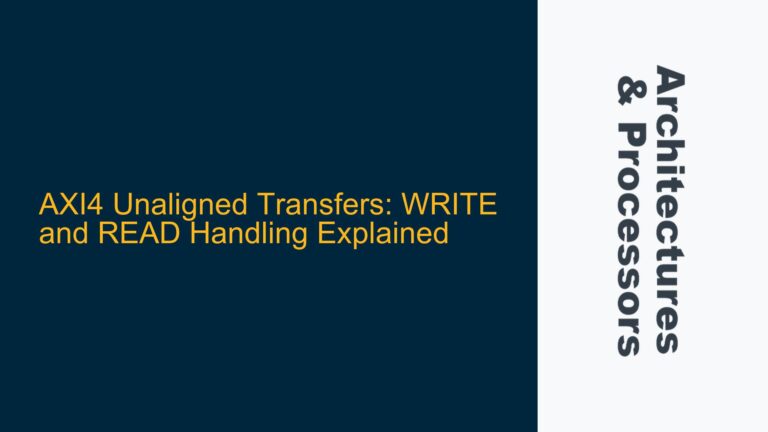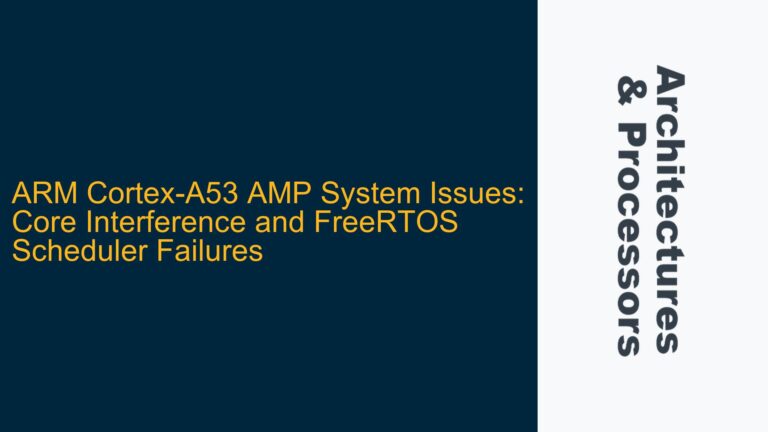AXI4 Protocol Constraints for 32-bit Data Bus Width
The AXI4 protocol, as part of the ARM AMBA specification, defines a robust framework for data transfer between components in a system-on-chip (SoC). When dealing with a 32-bit data bus width, the protocol imposes specific constraints that must be carefully considered to ensure efficient and correct data transfer. The WDATA signal, which carries the actual data payload, is limited to 32 bits per transfer, meaning each data beat corresponds to 4 bytes. This limitation directly impacts the number of transfers required to move larger data sets, such as the 50KB mentioned in the discussion.
The ARSIZE[2:0] and ARLEN[3:0] signals play a critical role in defining the size and length of each burst transfer. ARSIZE specifies the number of bytes transferred in each beat, while ARLEN determines the number of beats in a burst. For a 32-bit data bus, ARSIZE should be set to 0b010, indicating a 4-byte transfer per beat. ARLEN can range from 0 to 255, allowing for up to 256 beats in a single burst. However, the maximum data that can be transferred in a single AXI4 transaction is 1024 bytes (256 beats x 4 bytes per beat), which is significantly less than the 50KB requirement.
The AWADDR signal, which specifies the starting address for write transactions, must also be aligned according to the data bus width. For a 32-bit bus, the address should be aligned to 4-byte boundaries. Misalignment can lead to inefficiencies or protocol violations, as the AXI4 protocol does not support unaligned transfers directly.
Calculation of Required AXI4 Transactions for 50KB Data Transfer
To transfer 50KB of data over a 32-bit AXI4 bus, the number of required transactions must be calculated based on the protocol constraints. Given that each transaction can transfer a maximum of 1024 bytes, the total number of transactions required is determined by dividing the total data size by the maximum transaction size. For 50KB (51,200 bytes), this results in approximately 50 transactions (51,200 / 1024 = 50).
Each transaction will consist of a burst of up to 256 beats, with each beat transferring 4 bytes. The exact number of beats per transaction can be adjusted based on the specific requirements of the data transfer. For example, if the data is divided into smaller chunks, the ARLEN value can be reduced accordingly. However, reducing the burst length may increase the overhead associated with each transaction, as the address and control signals must be re-sent for each new transaction.
The payload construction process involves creating a series of AXI4 payloads, each corresponding to a single transaction. Each payload must include the appropriate AWADDR, ARSIZE, and ARLEN values, as well as the WDATA for write transactions. The payloads must be constructed in such a way that the data is transferred sequentially, ensuring that the receiving component can correctly reassemble the data.
Optimizing AXI4 Payload Construction for Efficient Data Transfer
Optimizing the construction of AXI4 payloads for efficient data transfer involves several key considerations. First, the alignment of the starting address (AWADDR) must be ensured to avoid protocol violations and to maximize the efficiency of each transaction. Misaligned addresses can result in additional beats being required to transfer the same amount of data, increasing the overall transaction count and reducing throughput.
Second, the burst length (ARLEN) should be maximized within the constraints of the protocol to reduce the number of transactions required. However, this must be balanced against the potential for increased latency if the receiving component cannot handle large bursts efficiently. In some cases, it may be beneficial to use shorter bursts to ensure that the data is processed in a timely manner.
Third, the use of the AXI4 INCR burst type is recommended for sequential data transfers, as it allows for continuous addressing without the need to specify the address for each beat. This reduces the overhead associated with address signaling and improves overall transfer efficiency.
Finally, the construction of the payloads must take into account the specific requirements of the TLM 2.0 model being used. The TLM 2.0 guide provides detailed information on how to map AXI4 transactions to TLM payloads, ensuring that the data is correctly represented and transferred within the simulation environment. This includes the correct handling of the WDATA signal, as well as the appropriate use of the AWADDR, ARSIZE, and ARLEN signals to ensure that the data is transferred in the correct order and with the correct alignment.
In summary, the construction of AXI4 payloads for a 32-bit data bus width and a 50KB data transfer requires careful consideration of the protocol constraints, the calculation of the required number of transactions, and the optimization of the payload construction process to ensure efficient and correct data transfer. By following these guidelines, the data transfer can be achieved with minimal overhead and maximum efficiency, ensuring that the receiving component can correctly process the data.
